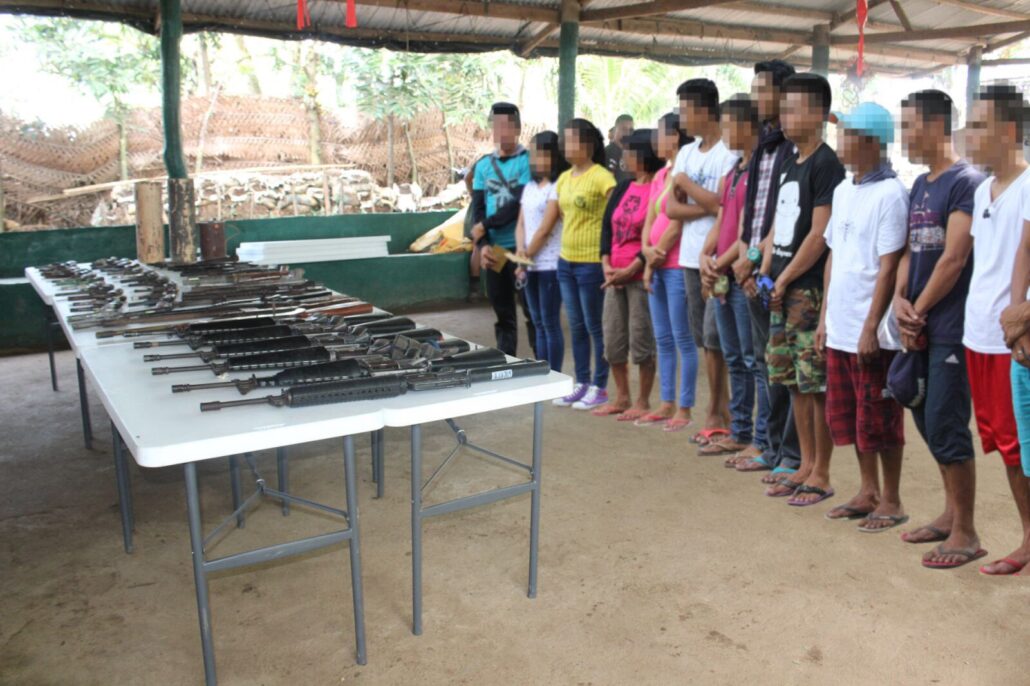KMP: Gov’t anti-insurgency drive targets farmers, people’s organizations
The Rodrigo Duterte government targets and forces farmers to pose as surrenderers and be counted as trophies in its anti-insurgency campaign, an investigation by a farmers’ group revealed.
The Kilusang Magbubukid ng Pilipinas (KMP) said a nationwide profiling campaign is ongoing against farmers, many of whom are later listed and presented as surrendered New People’s Army (NPA) members or supporters by the National Task Force to End Local Communist Armed Conflict (NTF-ELCAC).
The KMP said the attacks on the peasant sector was affirmed by its series of online fact-finding activities with campaign group Tanggol Magsasaka on farmers, leaders, and other residents in 11 provinces nationwide from July to August.
More than 70 victims gave their testimonies and affidavits on over a hundred cases of human rights abuses perpetrated by state forces, KMP said.
The groups’ first ever online fact-finding activity was aimed to “expose the Duterte regime’s dirty and brutal war targeting farmers, to silence their collective struggle for land, economic reforms, and social justice. “
The fact-finding mission was held just as President Duterte bragged in his last State of the Nation Address last July 26 that about 17,000 NPA members have already surrendered to government forces.
“More than 17,000 former communist rebels have surrendered to the government. They have returned to the fold of the law and are happily reintegrating to the community,” Duterte said.
The President added his administration’s projects such as farm-to-market roads, livelihood, education and sanitation were able to destroy 15 NPA fronts, which he did not identify.
The Communist Party of the Philippines (CPP) however laughed at the President’s claim, pointing out past military claims the NPA has no more than 4,000 fighters left.
“”Fifteen guerrilla fronts dismantled? Dream on, Duterte. Si Gen. Hermogenes Esperon ng NTF-ELCAC nagsabi, mahigit daw 4,000 noong June ang NPA mula 3,700 noong December,” CPP information officer Marco Valbuena said.
Civilians
The KMP said many of those claimed by NTF-ELCAC’s to be surrenderers were civilians, including farmers, farm workers, peasant leaders, rural women and youth, and fisher folk.
“[T]he majority of these so-called surrenderers are civilians — ordinary farmers who were either coerced, forced, or duped into ‘surrendering’ to the government,” the KMP said.
The group said that based on initial findings of its online investigation, red-tagging, threat, harassment, and intimidation are the most common forms of abuse by state forces.
Other instances of abuses include:
* Home and farm “intimidation visits” by police, military, and intelligence agents;
* “Forced presentation” of peasant leaders, farmers, and civilians to village authorities and Philippine Army camps to have their names “cleared”; and
* Forced attendance in village meetings organized by the military to be “lectured” on counterinsurgency.
KMP said that individuals targeted for forced surrender were intimidated to sign document denouncing local organization and the CPP-NPA-NDFP alleged as “Communist Terrorist Groups.”
The group’s accusations mirror the December 2019 Philippine Army admission it manipulated a photo to show a group of so-called NPA surrenderers in Masbate province.

Automatic NPA supporters
The KMP revealed government forces automatically accuse local peasant organizations and associations supporters of the NPA or have links and relations to the CPP, NPA and the National Democratic Front of the Philippines (NDFP).
“Farmers and rural populations in localities are often red-tagged as members of the so-called Milisyang Bayan and Sangay ng Partido sa Lokalidad. Legitimate peasant organizations engaged in farm campaigns, campaigns for land reform, against land-grabbing, against high land rent, and other forms of feudal exploitation are always and automatically red-tagged and vilified by state forces,” KMP said.
The group added its affiliates as well as those of other peasant organizations have been red-tagged, including Danggayan, Dagami, Kaguimungan, UMA-Isabela, AMIHAN-Ambi, PIGLAS and CLAIM in Quezon, AMB in Bulacan, KMB, BCPAI, and LAMBAT in Bicol, and local organizations of farmers in Cavite, Camarines Sur, Albay, Iloilo, and Capiz.
“In the course of the comprehensive and sustained forced surrender campaigns, state forces, and authorities use varied forms ranging from persuasion, deception, fraud, subterfuge, suppression, coercion, and outright use of force and violence,” the KMP said.
It added the government’s counter-insurgency campaign takes full advantage to enforce more restrictions in peasant communities, making peasant communities and villages virtual military garrisons.
The group said its fact-finding mission will continue in the coming weeks to further probe the situation in other regions and provinces. # (Raymund B. Villanueva)
